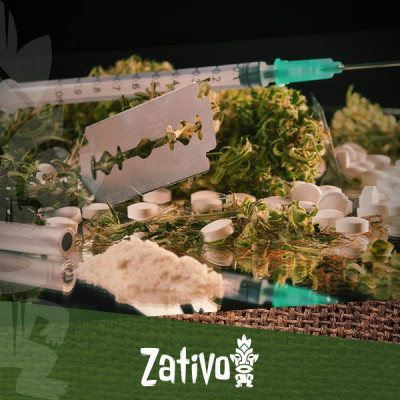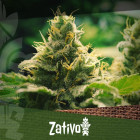Don't have an account?
Register NowYou have to add to cart at least 5 bottles or any program to make checkout.
- BlogThe 3 Main Drug Types: Stimulants, Depressants, And Hallucinogens
The 3 Main Drug Types: Stimulants, Depressants, And Hallucinogens
Published: November 10th, 2021
Categories:
Other subjects
If you’ve taken different drugs, you may have noticed that certain ones have distinct characteristics that share similarities with other drugs. For instance, cocaine and MDMA make users energetic and sociable, opioids and alcohol cause relaxation and loss of control, and LSD and magic mushrooms cause powerful psychedelic trips that transport us to altered realities.
Though there are many ways to categorise drugs, perhaps the most common is by their effect on the central nervous system (CNS). The brain is a large part of the CNS, and all psychoactive drugs affect the brain—hence the “psycho” in “psychoactive”. However, many affect the rest of CNS too, which is why people find they experience, for instance, a raised heart rate.
The three main categories of drugs are:
• Stimulants (MDMA, cocaine)
• Depressants (heroin, alcohol)
• Hallucinogens (psilocybin mushrooms, LSD)
There is also the vague category of “other”. This is for drugs that are clearly psychoactive but don’t fall easily into one of the above categories. Cannabis appears in this category, due to its unique effects. Moreover, MDMA is sometimes categorised as “other” due to its powerful hallucinatory effects at higher doses.
Other ways to categorise drugs include:
- Use (medical/recreational)
- Source (synthetic/plant)
- Legality (legal/illegal)
- Risk status (safe/dangerous)
What Are Stimulants?
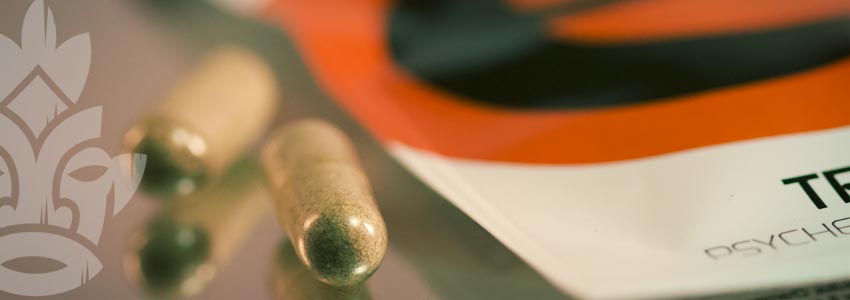
Stimulants are drugs that speed up the CNS. This means that attention, energy level, sociability, and libido are enhanced. Moreover, they are often associated with powerful feelings of euphoria and well-being. At lower doses, certain stimulants can be ergogenic, meaning they increase focus. This is why certain stimulants—modafinil, amphetamine, and methylphenidate—are used to treat attention deficit disorders. Ergogenic properties are not a necessary characteristic of stimulants, though. Cocaine, for instance, is not ergogenic.
Catecholamines are key to the mechanism of most stimulants. These neurotransmitters manage the processes listed above—attention, etc. By either inhibiting the reuptake of catecholamines or stimulating their creation, stimulants are able to speed up the CNS and cause their “stimulating” effects.
Other stimulants are serotonergic, too. MDMA is the most well-known example. By inhibiting the reuptake of serotonin, it causes a burst of euphoria, and also explains the hallucinogenic properties of this drug. As we will see, serotonin is the key neurotransmitter involved in hallucinogens.
One of the infamous outcomes of taking stimulants is the dreaded comedown. As these drugs wear off, users experience a massive drop in pleasant effects, often leaving them feeling “empty”. Compounding the mental effects of stimulant comedowns, the after-effects of such stimulation to the CNS often leave users feeling drained for some time, especially if taken regularly or in high doses.
Common Stimulants
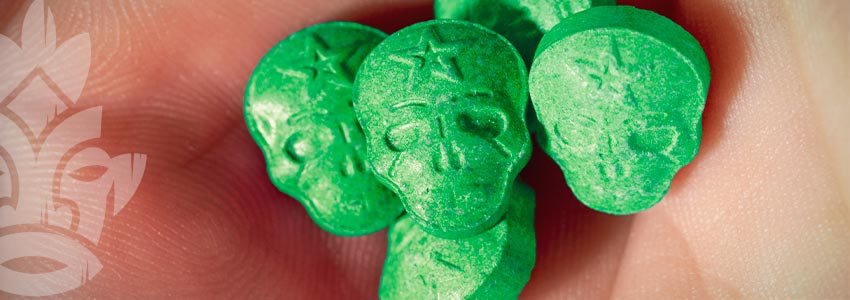
There are a huge number of drugs that can be classified as stimulants, but the following are some of the most commonly used.
Amphetamines
Also known as “speed” or “base”, amphetamines fit into the phenethylamine class of stimulants. Amphetamines can be used in the treatment of attention deficit disorders and narcolepsy, but in very low, therapeutic doses. At this level, they enhance strength, attention (only in those with these conditions), and cognitive performance.
At higher doses, they cause feelings of euphoria, can keep users awake (potentially for days at a time), and can cause psychosis. Amphetamines are used as a party drug, particularly in Europe. They are a common drug in Berlin’s clubbing scene.
Cocaine
Cocaine, known by many names, is infamous and iconic in equal measure. Probably one of the most famous drugs in the world, this derivative of the coca plant causes feelings of energy, sociability, and euphoria. It is also the precursor to the even more infamous “crack”.
Cocaine causes powerful stimulation of the CNS, and can cause aortic spasms and cardiac arrests in those with preexisting heart conditions, or at high doses. In long-term users, it can cause addiction, depression, holes in the heart, and many more symptoms.
Nicotine
Who knew cigarettes were stimulants? Nicotine is a comparatively mild but extraordinarily addictive stimulant. A 2010 study by David Nutt rated nicotine as the 6th most damaging of 20 drugs analysed, scoring only 3% lower than cocaine and 13% higher than amphetamines.
Caffeine
Caffeine, found most commonly in coffee and certain teas, affects levels of adenosine. Exhibiting similar effects to low doses of amphetamines, caffeine increases energy level, strength, and focus. It is the most widely used stimulant in the world, and is considered fairly addictive but with few serious health problems attached.
Khat
Khat is a plant native to the Horn of Africa and the Arabian peninsula, and is most commonly used by people native to or closely descended from those parts of the world. Beyond those people, it is rarely used.
It causes mild to moderate stimulation, increasing feelings of wakefulness and causing a loss of appetite. It is not considered particularly dangerous or addictive, classified as less problematic than both alcohol and tobacco by the World Health Organisation (WHO).
Betel Nut
The betel nut or areca nut is the seed of the areca palm (Areca catechu). Native to the tropical Pacific, South and Southeastern Asia, and parts of West Africa, it is now most commonly used in India. Technically a berry, it is chewed over time and has similar effects to nicotine, including being highly addictive and highly carcinogenic.
What Are Depressants?

Contrary to the mechanism of stimulants, depressants lower neurotransmitter levels and suppress the CNS. They are named depressants due to their effects on the CNS, rather than the effects they may have on people’s moods. In fact, depressants tend to be associated with feelings of relaxation and euphoria.
Though not the only way they work, one of the major mechanisms associated with depressants is facilitation of gamma-aminobutyric acid (GABA). This reduces neuronal excitability throughout the CNS, thereby suppressing it.
One of the major dangers of depressants is that by suppressing the CNS, they can suppress the respiratory system and cause respiratory arrest—when you can no longer breathe. This is a leading cause of death in people who overdose on depressants.
Common Depressants
As with stimulants, many depressants exist. Below are some of the most common:
Alcohol
You wouldn’t necessarily jump to group alcohol and heroin together, but in terms of their effects on the CNS, they are not-so-distant cousins. Alcohol’s effects are widely known, and need little introduction. The chemical in alcoholic drinks that causes psychoactive effects is ethanol. It is the oldest continuously used drug.
Opioids
Besides alcohol, opioids are probably the most well-known depressants—especially the opioid heroin. However, despite this, and despite being classed as depressants, they do not actually depress the CNS. Moreover, they are responsible for much neuronal excitement. Rather than slowing down the CNS, they actually boost feelings of pleasure in the brain—via opioid receptors—which makes them such a good treatment for pain.
Rather than reducing the pain signals, they sort of drown them out with feelings of pleasure. Hence, they are not true depressants.
They get the name “opioid” because they have an affinity with opioid receptors in the brain—these receptors get their name because they are excited by opiates, drugs derived from opium.
Nevertheless, the observable effects these actions have on the body tend to fall in line with drugs that are true depressants, and so they are classed as such.
Some opioids include:
- Heroin
- Morphine
- Codeine
- Methadone
- Oxycontin
Benzodiazepines
Benzodiazepines are similar to opioids, except the former actually do depress the CNS. They tend to be used in the treatment of mental and anxiety disorders, as they reduce transmission throughout the CNS, serving to relax the user. While they tend not to cause overdose if taken alone, they interact poorly with other drugs, such as alcohol, and are highly addictive.
Benzodiazepines include:
- Diazepam (Valium)
- Alprazolam (Xanax)
Volatile Substances
Some solvents can affect the CNS too. These include glue, types of paint, some aerosol sprays, and more—the gases of which can be inhaled to get high. These fumes are dangerous and addictive, and due to the nature of ingestion, they can be incredibly hard to dose, and thus fatal.
What Are Hallucinogens?
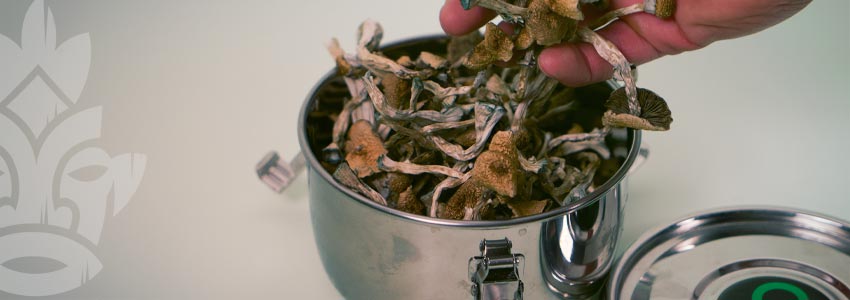
Hallucinogens are those drugs that cause psychedelic trips. Often, unlike other classes of drugs, their effects are entirely or mostly limited to the brain, with minimal effects on the body. Therefore, they tend to have very low toxicity and rarely result in death by overdose.
Mostly, they are serotonergic, meaning they increase levels of serotonin, or inhibit its reuptake.
Common Hallucinogens
Hallucinogens are very well known, but often poorly understood. Subject to much disinformation and slander, these drugs are powerful, but not as evil as some would have us believe. Indeed, many hallucinogens have been part of human tradition for thousands of years. Below are some of the most renowned.
LSD
Also known as “acid”, this is probably one of the most infamous drugs in the world. LSD causes powerful effects at extremely low doses. Active doses start as low as 25μg. That’s 0.025mg.
LSD trips can range from mild warping of reality to total dissolution of reality, depending on the dose. They are long-lived and very powerful, causing insight and potentially the loss of ego, or “ego death”. They can also be very scary.
The physical effects of LSD are minimal.
Psilocybin (Magic Mushrooms)
Psilocybin, converted to psilocin (the active ingredient) in the body, is found in magic mushrooms. It has similar effects to LSD, but is less powerful and metabolised much faster in the body, meaning the trip doesn’t last as long.
Dosing depends on the strain/species of mushroom. Usually, a typical dose will fall between 1 and 5 grams of dried mushrooms.
Mescaline (Cactus)
Mescaline is the active compound found in a number of cacti, most famously peyote. It causes powerful and insightful psychedelic experiences. Synthetic mescaline can also be found and consumed. However, some believe that the other alkaloids present in the cacti are essential to a “proper” mescaline experience.
It has been used for thousands of years by native cultures in Central and South America.
DMT
Dubbed “the spirit molecule”, dimethyltryptamine (DMT) is probably the most profound and powerful drug in the world. The pure molecule is usually smoked/vaporized, or DMT-containing plants are drunk as part of the ayahuasca brew. The former induces powerful but short-lived trips in which the user can “break through” and enter other universes and dimensions. The latter causes long-lasting experiences during which users may communicate with spirits and have profound realisations.
The consumption of ayahuasca is an essential part of some South American cultures.
Dissociatives
Dissociative anaesthetics, such as ketamine and DXM, are classed as hallucinogens, but not psychedelics.
At high doses, they are able to cause full out-of-body experiences, with detachment from both the self and the universe.
Unlike the psychedelics mentioned above, dissociatives have powerful effects on the rest of the body, hence their use as anaesthetics and painkillers. Likewise, it makes overdose highly dangerous and potentially lethal, causing events such as heart or brain failure.
What Type of Drug Is Cannabis?
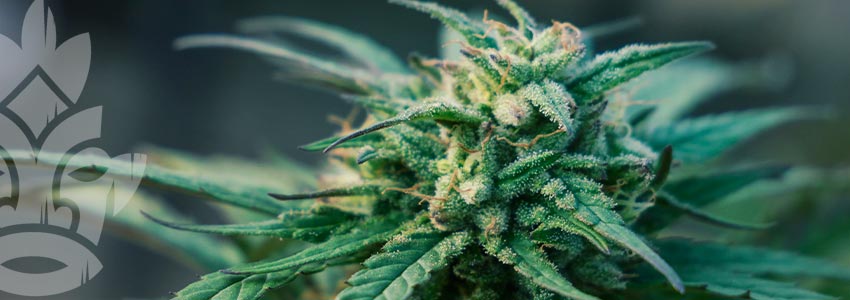
As mentioned, some drugs do not fit neatly into any of those three categories. Cannabis is one of these. Cannabis has some depressant-like effects and some hallucinogenic effects, and even some stimulant effects, earning it the illusive status of “other”.
Luckily, cannabis has a good safety profile, as is associated with virtually zero overdose-related deaths when used alone. That doesn’t mean you should not proceed with caution when using cannabis, but its unique profile has made it one of the most widely enjoyed drugs in the world, despite its lack of easy categorisation.

